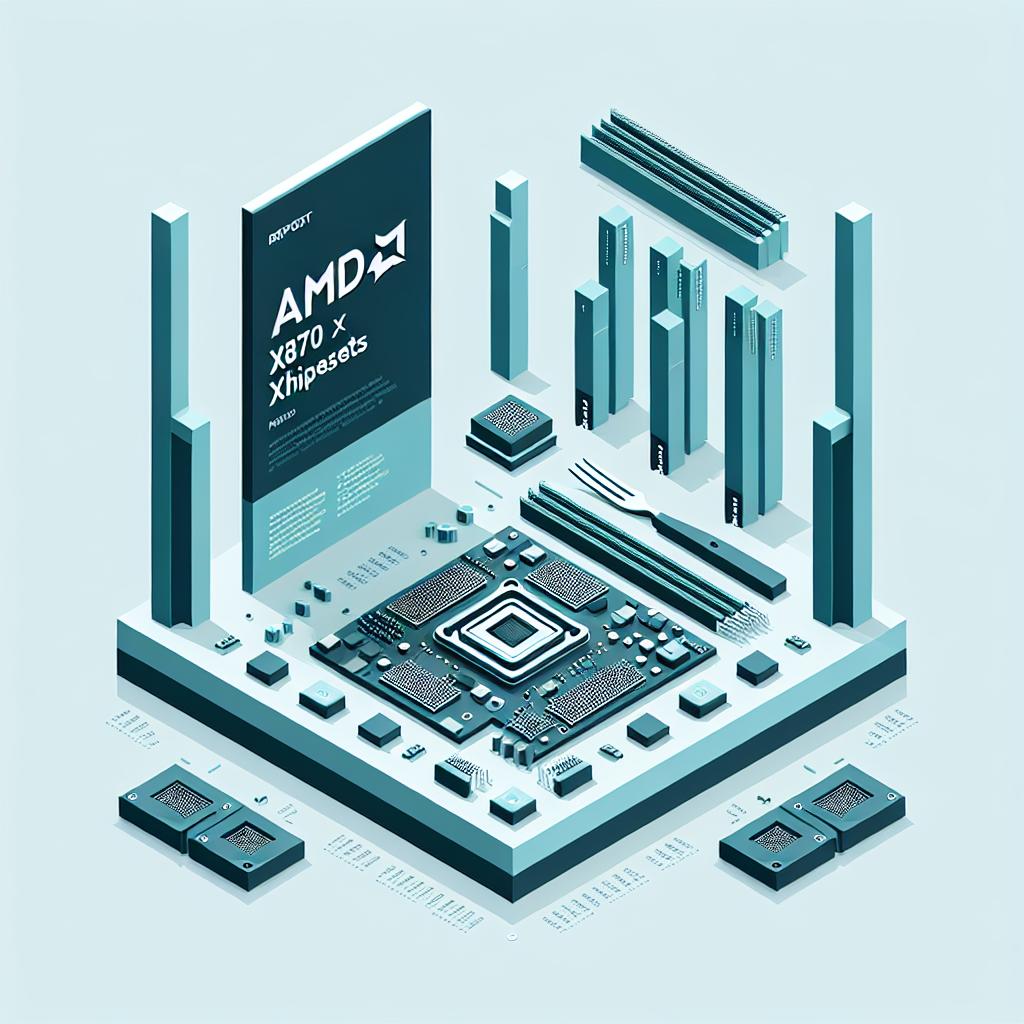
A Comprehensive Comparison of AMD's X870E and X870 Chipsets

TABLE OF CONTENTS
- Introduction
- Design and Architecture
- Conclusion
1. Introduction
This report provides a comparative analysis of the AMD X870E and X870 chipsets. The insights cover performance aspects, design considerations, feature differences, and potential use cases, basing the comparison on collected data and expert reviews.
2. Key Insights
The AMD X870E chipset, with its dual Promontory 21 die design, enhances connectivity options compared to the single die X870.
AMD X870E provides extensive connectivity suitable for high-performance computing, while the X870 offers robust but more limited options.
Both X870E and X870 chipsets support higher EXPO memory clocks, with the X870E offering superior performance boosts.
Both chipsets support PCIe Gen5 and USB 4.0 standards, making them a future-proof choice for high-performance computing environments.
3. Design and Architecture
3-1. Chip Design
The AMD X870E chipset boasts a dual-chip design using two Promontory 21 dies, enhancing its connectivity options. In contrast, the X870 utilizes a single die configuration, still providing significant performance but with fewer connectivity features.
This quote highlights the key enhancements brought by the AMD X870E and X870 chipsets, particularly focusing on the advancements in USB 4.0 standard, PCIe Gen5 support, and memory clock improvements.
3-2. Connectivity and Ports
The X870E's dual-chip design provides extensive connectivity and bandwidth options, making it suitable for high-performance computing environments. In comparison, the X870 offers robust, albeit limited, connectivity options due to its single-chip design.
| Feature | X870E | X870 |
|---|---|---|
| Chip Design | Dual Promontory 21 dies | Single Promontory 21 die |
| PCIe Gen5 | Supported | Supported |
| USB 4.0 Standard | Included | Included |
| EXPO Memory Clock Support | Higher | High |
This table compares the key features of the AMD X870E and X870 chipsets, emphasizing their differences and similarities in terms of chip design, PCIe support, USB standards, and memory clock capabilities.
4. Conclusion
Both chipsets represent significant technological advancements, particularly for users in need of high-performance, PCIe 5.0, and DDR5 support. The X870E delivers superior connectivity and enhanced performance due to its dual-chip design and additional PCIe lanes, making it ideal for power users and enthusiasts, while the X870 provides a robust, balanced option for mainstream high-performance computing. AMD's support commitment until 2027 makes these platforms a long-term investment for future-proofing computing needs.
5. Glossary
5-1. AMD EXPO™ Technology [Technology]
AMD EXPO™ Technology is designed to improve memory overclocking performance. On the X870 and X870E chipsets, it enables boosted DDR5 memory speeds up to DDR5-5600 MT/s or higher, benefiting overall system performance.
5-2. PCIe 5.0 [Technology]
Peripheral Component Interconnect Express (PCIe) 5.0 is the latest iteration of the PCIe interface, providing significantly higher data transfer speeds compared to PCIe 4.0. Both X870E and X870 chipsets support PCIe 5.0 for state-of-the-art connectivity and performance.
6. Source Documents
- AMD announces Zen 5 and the Ryzen 9000 series, with a 16% IPC uplift shipping in Julyhttps://sg.news.yahoo.com/amd-announces-zen-5-ryzen-030107202.html
- AMD Announces Ryzen 9950X, 9900X, 9700X, 9600X processors (ZEN5)https://www.guru3d.com/review/amd-announces-ryzen-9950x-9900x-9700x-9600x-processors-zen5/
- AMD X870E & X870 AM5 Motherboards To Launch On 30th September, USB4 Support & Upgraded Designshttps://wccftech.com/amd-x870e-x870-am5-motherboards-launch-30th-september-usb4-support-upgraded-designs/
- AMD Launches X870E & X870 '800-Series' Motherboard Chipsets, Promises Long-Term AM5 Socket Support Until 2027+https://technosports.co.in/amd-launches-x870e-x870-800-series-motherboard-chipsets-promises-long-term-am5-socket-support-until-2027/
- 'The ongoing conversations around ARM vs x86 power are based on a false premise,' says Intel's VP of technical marketinghttps://headtopics.com/uk/the-ongoing-conversations-around-arm-vs-x86-power-are-57011574
- AMD Unveils Next-gen “Zen 5” Ryzen Processors to Power Advanced AI Experienceshttps://www.edge-ai-vision.com/2024/06/amd-unveils-next-gen-zen-5-ryzen-processors-to-power-advanced-ai-experiences/